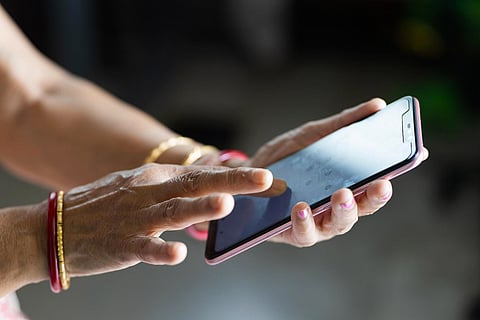

On Monday, August 2, the Union government launched ‘e-RUPI’, a digital payment system touted to “play a huge role in making DBT (direct benefit transfer) more effective in digital transactions in the country”. Targeting beneficiaries in public schemes has been an issue in India, with several points of leakages, fake beneficiaries as well as the subsidies not reaching the intended beneficiaries. Prior to 2013, if a citizen was availing a subsidised product, the cost of the subsidy was essentially transferred by the government to the company providing the service.
Due to the leakages, in 2013, the Union government shifted to a system of Direct Benefit Transfer (DBT) — where the Union government used Jan Dhan accounts, Aadhaar numbers and mobile numbers to verify a beneficiary. In this case, when a subsidy was claimed, such as for food grains, the money was transferred to your bank account. During the COVID-19 pandemic, the Union government had announced a Rs 1.7 lakh crore DBT package as part of the Pradhan Mantri Garib Kalyan Yojana (PMGKY). But of course, there have been issues pertaining to accessing bank accounts, Aadhaar authentication failures, etc.
e-RUPI attempts to go a step further in this attempt to plug leakages in the system, and has been developed by the National Payments Corporation of India (NPCI) on its UPI platform, in collaboration with the Department of Financial Services, Ministry of Health & Family Welfare and National Health Authority.
It has been defined as a cashless and contactless instrument for digital payment. It is a QR code or SMS string-based e-voucher, which is delivered to the mobile of the beneficiaries.
It’s similar to a gift voucher that can be redeemed, and unlike many schemes, doesn’t require a card, an app or internet banking — and doesn’t require a physical interface. It’s a QR code or an SMS sent to your phone, and is used for a specific purpose.
In this case, a voucher given to a specific person can only be redeemed for the purpose it was intended for. For example, if it's a subsidy for fertiliser, the voucher that is issued to the person can only be used for this.
Here’s how the government envisions it, as per PM Modi’s speech:
"Suppose, an organisation involved in charity does not want to take advantage of the free vaccine scheme of the government of India, but wants to contribute to private hospitals which are buying vaccines at a price. If it intends to vaccinate 100 poor people, it can give e-RUPI vouchers to those 100 poor people. The e-RUPI voucher will ensure that it is used only for vaccination and not for any other purpose. With time, more activities will be added to it. For example, if anybody wants to bear treatment expenses of somebody, or to provide financial help for medicines and food to the TB patient, or wants to provide food and nutrition related facilities to children and pregnant women, e-RUPI will prove to be very helpful to him. That is, e-RUPI, in a way, is person as well as purpose specific."
In future, the government said it is planning to use e-RUPI for delivering support for mother and child welfare schemes, TB eradication programmes, drugs & diagnostics under schemes like Ayushman Bharat Pradhan Mantri Jan Arogya Yojana, fertiliser subsidies etc.
It doesn’t have to be issued only by the Union government, and can be given out by corporates as well to the beneficiaries they intend to supply to — for both employee welfare as well as their CSR initiatives.
In essence, a sponsor of a specific service or product and the intended recipient will be linked through the e-RUPI. The sponsor, in this case, can be the Union government, state governments, a corporate or any body that can use participating banks to send vouchers.
As per the NPCI, eleven banks can help issue e-RUPI — The State Bank of India, ICICI Bank, Axis Bank, HDFC Bank, Bank of Baroda and Punjab National Bank have made e-RUPI live at both the issuer as well as the recipient end.
Canara Bank, IndusInd Bank, Kotak Mahindra Bank, Indian Bank and Union Bank of India are currently live only from the issuer side.
According to the Union government, payment to a service provider is made only after the transaction is completed — the voucher being redeemed. Being pre-paid in nature, it assures timely payment to the service provider without the involvement of any intermediary, it added.
The sponsor decides the beneficiary and has to approach an issuing bank for the voucher. The sponsor has to give the details of the beneficiaries, as well as the purpose for which it is being issued. The identification for the intended recipient will be their name and phone number. The voucher can only be delivered to that person. At the point of redemption, this is confirmed with the help of a verification code.
These are non-transferable.
In essence, digital currency can be redeemed for anything, just like physical cash that we have. In this case, it can be redeemed only for a specific purpose, and is prepaid.
Recently, RBI Deputy Governor T Rabi Sankar said that the Reserve Bank is working on a Central Bank Digital Currency (CBDC), and is looking at a phased implementation strategy. It said it is in the process of launching it in wholesale and retail segments in the near future.
With PTI inputs